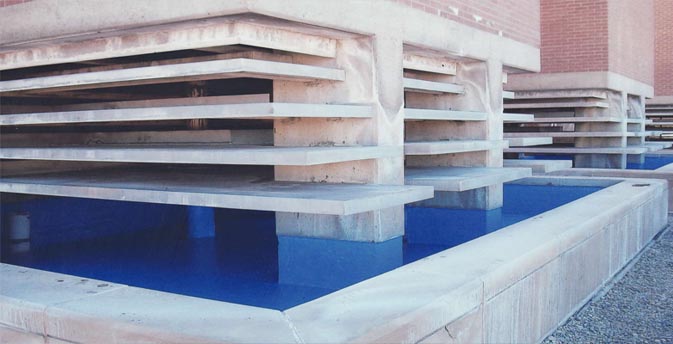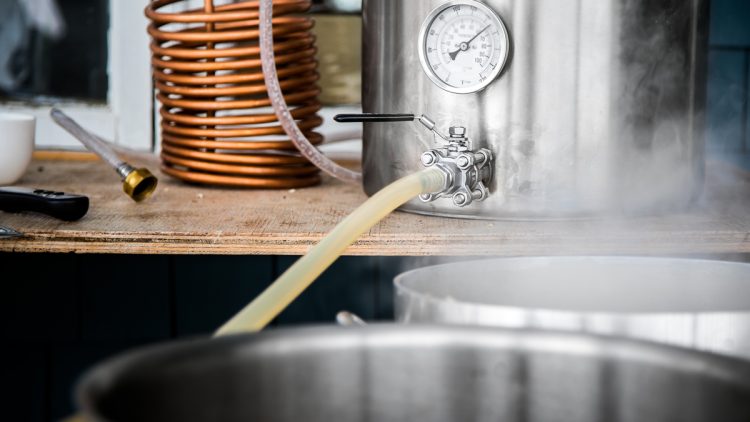If you’re searching for Heating and cooling technologies and want to understand how they work this article will help you. Common heating and cooling technologies including cooling towers, evaporation coolers, and humidifiers. All of these devices help keep our residential, commercial, and industrial properties warm in the winter and cool in the summer. It is these hard working mechanical systems that make our modern world comfortable and practical.
Cooling Towers | Evaporative Coolers | Humidifiers
Cooling Towers
A cooling tower happens to be used to cool off the circulating water that is used in power stations, oil refineries and chemical plants as well as for large scaled AC units. They are going to be the largest non-residential water consumers. Water that falls through the tower will be cooled because of evaporating and then it is returned to the tower top. The water that will drop into the basin will be about 10 degrees cooler than the water that is returned to the top. Towers will vary in size from large structures to small roof top units. The taller the tower is, the greater the temperature drop will be.
Water that is lost by evaporating, drift and bleed off which is water that is used to carry away the mineral buildup within the cooling tower. Water will need to be added to the system to make up for the loss which is called makeup water. Evaporated water loss from a cooling tower can be estimated to be 3 gallons of water per minute for 100 tons of water cooled. That means that a tower that has 500 tons of cooling will evaporate almost 22,000 gallons of water over a 24 hour period of operation.
Bleed-off Reduction
A major way to help improvewater efficiency of the cooling tower is to actually being to reduce the bleed off amount. Water can be reduced by 20% or more by circulating the water through the tower a few more times before bleed off happens. This results in a higher concentration ratio. A cooler’s concentration ratio is the measure of water use efficiency. The higher that the ratio is, the more water efficient it is.
Bleed-off Reuse
Cooling tower bleed off may be used to irrigate plants that aren’t sensitive to high salt content. Another type of option is to send it to water treatment plants. Not only would these options save water, but they may also save money through reduced sewer and water costs.
Use of Sulfuric Acid
Using sulfuric acid within the chemical treatment of a cooling tower will help to prevent scale buildup, so that the water is able to circulate more times before it is discarded or any makeup water is added. If the sulfuric acid treatment isn’t practical or feasible, then carboxylated polymers called carboxylates may be used in order to control the pH and prevent scale. The carboxylate solubility is double without any treatment but less than using sulfuric acid.
Conductivity Controller
A conductivity controller is a device will automatically control the blowdown based on the number of concentration cycles that may be safely done. The resulting conductivity which is measured in microsegments per centimeter or uS/cm. The conductivity controller may continuously measure the conductivity of the cooling tower water as well as the discharge water whenever the conductivity set point has been exceeded.
EVAPORATIVE COOLERS
Evaporative coolers also called swamp coolers will increase the humidity of incoming air that is being drawn into the building and decreases the temperature. After a bit of time, recirculating the water in the evaporative cooler will assume the entering air temperature. This temperature is going to be the lowest temperature that the air may be cooled too.
The principal opportunity for conservation of water that is used is to help reduce the flow of bleed off from the coolers. Normally on a small stream of bleed off is needed for operation, however excessive amounts of water are often bled off. This wastes water and impairs the cooling efficiency of the cooler because the water doesn’t get as cold as possible.
There are 3 common types of evaporative coolers: dump pump, recirculating, and non-recirculating. The bleed off from all of these can be used to irrigate plants that aren’t sensitive to high salt content.
Recirculating Evaporative Cooler
This cooler type, the water will run off the pads and is captured and recirculated multiple times before it is discarded. A small amount of bleed off will be needed to control concentrations of contaminants within the water and to prevent damage to the cooler pads, which allow it to effectively operate. Bleed off valves may be adjusted to discharged the minimum amount of water needed. Recirculating evaporative coolers will only use about 3 gallons of water per hour.
“Dump pump” Evaporative Cooler
A dump pump will automatically empty and refill the water collection pan every few hours.
Once-through Cooling for Equipment
Within dry climates, equipment may be cooled using single pass or once through water. This is a very intensive water cooling process as the water is passed through and it cools the equipment, the water is discarded. Equipment that may be cooled by once through water are x-ray machines, degreasers, air conditioners, vacuum pumps, welders, hydraulic presses, air compressors, viscosity baths, condensers, hydraulic equipment, and rectifiers. Most types of water cooled equipment may be replaced by air cooled, energy efficient models. Water usage may be reduced through recirculation by using water from a non-portable source and by reusing the once through water for other purposes like irrigation or cooling towers. These practices help to save water and may also save money by decreased sewer and water costs.
In active management areas in Arizona, the ADWR prohibits using once through cooling water by industries that have their own wells unless the water is being reused.
Boiler & Steam Generators
Boilers are used within large heating systems of in those industries where a large amount of process steam is used. Water will be added to a boiler system to make up for any water loss and to help replace water loss whenever the boiler is blown down to remove solids that have built up. Whenever it is practical, steam condensate will need to be captured and returned to the boiler to be reused as makeup water. Condensate return systems will save water, reduce costs of pretreating boiler feed water and reduces energy use. Boiler operating costs could be reduced by 70% by installing a condensate return system. Water that is consumed by boiler systems may vary depending on the system size, how much steam is used, and the amount of condensate return.
Expansion Tanks
Expansion tanks help to provide a cushion of air for expansion of water when it heats. This helps to save water in 2 ways. It helps to prevent the pressure relief valve from being opened and discharging water to help relieve pressure and then it eliminates the need to use cold water when mixing valves to cool blow down because it will be condensed and cooled in the expansion tank. In a steel expansion tank, the air and water will touch each other. In a bladder expansion tank, the water and air will be separated by a diaphragm.
HUMIDIFIERS
Humidifiers are often used to add moisture to the air through evaporation, which increases the relative humidity levels. There are 2 major types of humidifiers: central humidifiers and room humidifiers. A room humidifier is a self-container unit that isn’t connected to a water supply line. The reservoir is manually filled. A central humidifier will be connected to a central heating system and water supply line. The reservoir is automatically filled.
Water-Conserving Humidifiers
Humidifiers will have a continuous bleed off system and waste water. In these particular humidifiers, a constant water stream will leave the reservoir and will enter the sewer system at the same time that a continuous stream of water will fill up the reservoir. However the use of a Recirculating humidifier will not constantly drain and replace the water. There are some concerns about sick building syndrome. An alternative to this would be to reuse discarded water for another purpose like irrigating plants instead of sending to the sewer. Another option is to adjust the discharge amount to the minimum amount of water to avoid too much bleed off. Timers may be used to turn off and on the humidifiers based on your seasonal needs, or to control whenever the water is pumped out of the reservoir to remove mineral buildup.
Mist Cooling Systems
These types of systems have become readily available to home owners and businesses as a great cooling option in areas that have low humidity and high temperatures. Water will be pumped through the system and released as a fine spray that evaporates which form a cool barrier against dry, hot air. Each misting nozzle will only use about a half of a gallon of water each hour. In order to conserve water, the system should only be used whenever people are using the area. There are some systems that have sensors that turn off the misters when no one is around, or there are off/on switches that can be activated when needed. It is also best to use the misters that have nozzles that may be independently controlled so that you are able to direct the nozzles right so that the system will only cool the intended areas and turn off misters when it is too humid or windy for them to work properly.
Phoenix Valley Cooling Tower & Chiller Maintenance
If your commercial or industrial location features a cooling tower or chiller keeping them in good working order is critical. Not only is controlling biological growth required by law, but neglecting the condition of your chillers or cooling towers reduces their life expectancy and diminishes performance. That means they are using more energy, impacting your bottom line, and wearing out more quickly. Maintain your industrial heating and cooling equipment with service from All Kote Lining, Inc.


